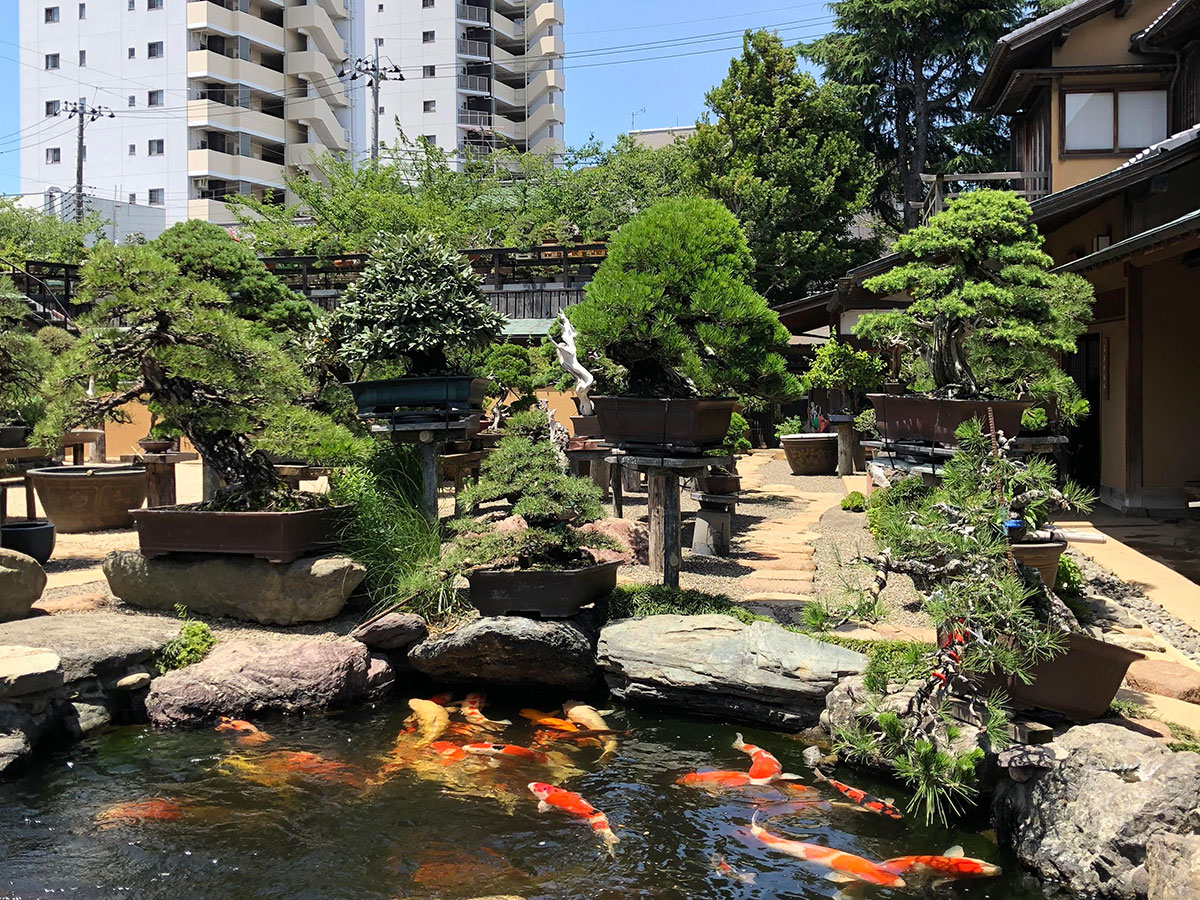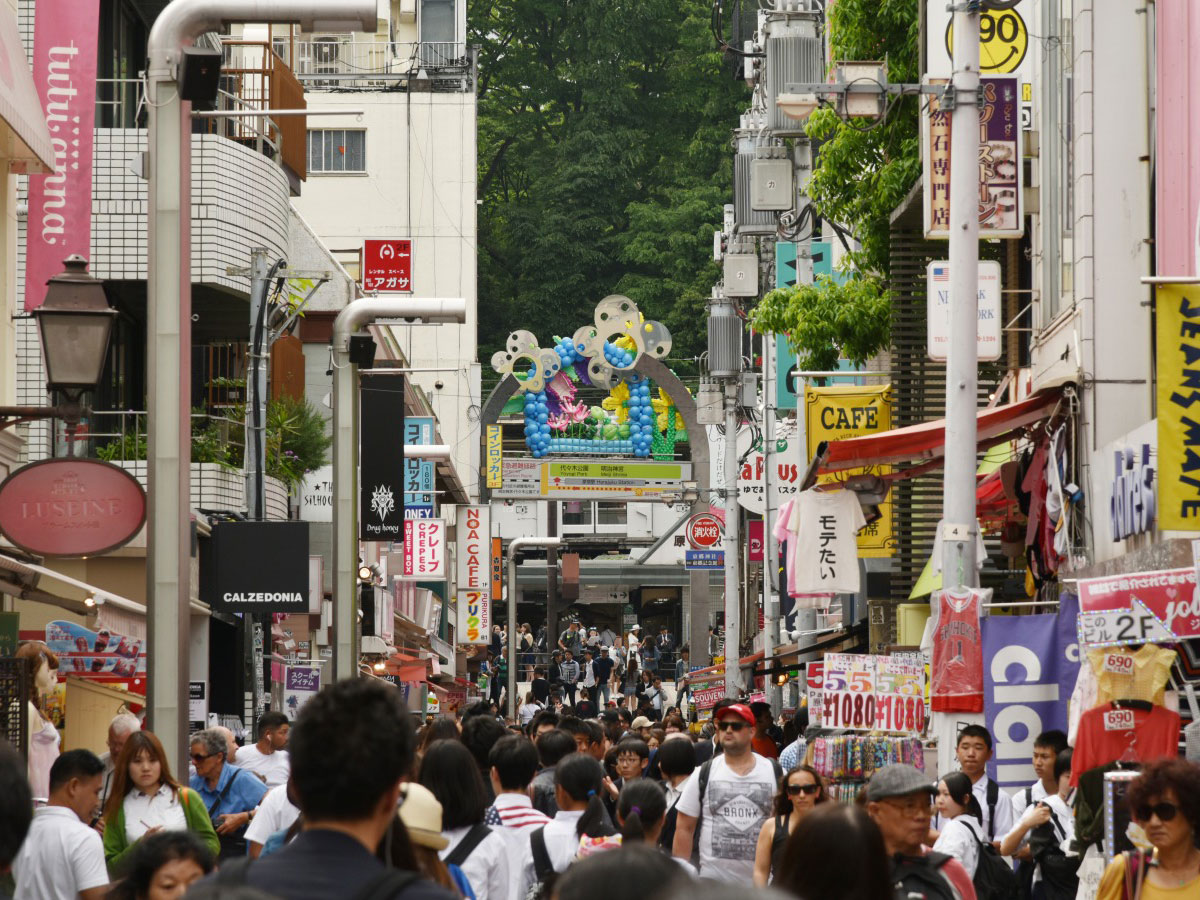- TOKYO
- KAGOSHIMA
REFRESHING BREEZE IN GREEN STILLNESS
At the Shunkaen Bonsai Museum, you can try making a bonsai that condenses the majesty of nature into one small pot, while receiving basic instructions from a teacher, all for a reasonable price.
Afterwards, you can set out on a soothing trekking journey that helps you forget the troubles of everyday life, as you gaze on the rich waters, lush moss, and charming old trees of Kagoshima's Shiratani Unsuikyo Ravine.
Official Tokyo Travel Guide
https://www.gotokyo.org/en/
Local government official website
http://www.kagoshima-kankou.com/for/
TRAVELER

- Traveled : July, 2020 Christopher Lawson
- Content Creator
Reside in Japan
Home country: Glasgow in Scotland
Day1
TOKYO
Shunkaen BONSAI Museummore
RECOMMENDED DESTINATIONS

-

- Christopher Lawson

The Shunkaen BONSAI Museum is a tranquil oasis on the outskirts of Tokyo. It features over 1,000 bonsai trees created and maintained under the careful eye of Kunio Kobayashi, one of the world’s leading bonsai craftsmen. You can experience pruning your own bonsai tree, which you can take away as a souvenir, or simply take your time strolling among the beautiful trees, which are all unique and at various stages of growth. The museum also exhibits some of the finest trees in a beautiful traditional-looking building that incorporates wood from Yakushima cedar trees, creating a relaxing natural space where traditional tea ceremonies are held. The staff are friendly and informative, with English explanation and information available.
Bus 20 minutes
train (JR 40 minutes)
Meiji Jingumore

The shrine attracts the greatest number of visitors every year during "hatsumode" over the New Year period.
-

- Christopher Lawson

Meiji Jingu shrine is located near one of Tokyo’s busiest stations, Harajuku Station, which is on the JR Yamanote line and borders Yoyogi Park. This shrine was dedicated to Emperor Meiji and Empress Shoken in 1920 and offers a tranquil space away from the bustling areas that surround it. The shrine was destroyed during World War II but was rebuilt to what it is today. The main complex is certainly worth a visit; it is easy to see why three million visitors come to the shrine during the annual New Year celebrations. Visitors can enjoy several Shinto activities and may be lucky enough to watch one of the many traditional Shinto weddings that take place at the shrine each year. What really makes this shrine stand out from other shrines in Japan is the vast wooded grounds. More than 100,000 trees, which were transported from across Japan, create a peaceful escape from the busy city that lies at the other side of the massive torii gate. The shrine also hosts the Inner Garden and the Meiji Jingu Museum, which newly opened in 2019 and hosts a vast collection from the Meji Era.
By foot 10 minutes
Harajuku Takeshita Streetmore

-

- Christopher Lawson

If not one of the busiest shopping streets in Tokyo, Takeshita Street in Harajuku is certainly the brightest and most colourful. This pedestrian street is over 400 meters long and full of an array of independent stores, small boutiques, as well as some of the major retail brands that often use this location to test the response for new products, trends, and prototypes. With a range of cafes and reasonably priced restaurants, including several crepe shops offering a range of toppings and fillings, no wonder this area is a favourite of young people.
Tokyo Metropolitan Area
Day2
KYUSHU(KAGOSHIMA)
Haneda Airport
JAL (JAL Japan Explorer Pass) Show details
-

- Christopher Lawson
Like most international airports, I found Haneda airport English-friendly. It certainly offers a number of restaurants and shops to pass the time.

The flight from Tokyo to Yakushima was trouble-free, with the usual high standard of customer service that Japanese airlines are renowned for, as well as on-time departure and accommodating staff.
I certainly enjoyed the refreshing kiwi juice that I choose from the range of complimentary soft drinks JAL had on offer.
Yakushima Airport
-

- Christopher Lawson

Yakushima Environmental and Cultural Village Center; Located close to Miyanoura Port, Yakushima Environmental and Cultural Village Center offers a great chance to learn about the unique nature and culture of Yakushima. The exhibition hall displays include a range of models, information panels, videos, samples, and images, making learning easy, interactive, and fun for children as well as adults. The center also shows an interesting and appealing 25-minute video called “Yakushima, Symphony of Forest and Water,” which is shown in the large-screen of the theatre hall.

Yakushima Visitors Center; Yakushima Visitors Center is a one-stop shop to get all the information you could possibly need about sightseeing tours, accommodation, hiking routes, and local areas. All hiking and outdoor equipment that you would require can be rented, and bus tour tickets can be purchased. The visitors center also offers you the chance to see and purchase over 5,000 local products.
Taxi 40 minutes
Seibu Rindo Forest Pathmore

-

- Christopher Lawson

Located on the western part of Yakushima is a 15km road that is included within the island’s World Heritage Site due to the evergreen forest that surrounds it. The route is like a tunnel of green through which you can slowly take a drive through, looking out for the many wild animals in the area. The endangered Yakushima white pine trees and the giant Gajomaru trees, with their air roots hanging down, can be viewed along the route.
Taxi 10 minutes
Ohko-no-taki Waterfallmore

-

- Christopher Lawson

Rated as one of the top 100 waterfalls in Japan, Oko no Taki is the largest waterfall on Yakushima Island. Standing at the base, looking up and seeing the roaring water descend from the 88-meter-high cliff is spectacular. It is a popular destination during the hot summer months, which is understandable as the cool spray gives a nice release from the heat.

Yakusugi Land; Yakusugi Land is the most accessible area in which to see the island’s beautiful ancient sugi (cedar) trees, which are over a thousand years old. Taking a relaxing stroll through this park gives you a sense of peace and tranquillity. There are several trails in the park that lead you to Buddha sugi, Futago sugi, and Sennen sugi, which are all trees worth seeing.
Taxi 105 minutes
-

- Christopher Lawson

sankara HOTEL & SPA YAKUSHIMA; This hotel really is the last word on elegance, luxury, and style, with 29 guestrooms in 12 villas dotted throughout the tranquil, wooded grounds. Each standard villa features its own distinctive bedroom, living area and multi-purpose room. Renowned for its five-star spa experience, the Sankara spa, Sana, is the perfect place to re-energise body and mind. The Sankara's magnificent outdoor pool, with spectacular poolside views of the East China Sea, certainly makes a visit worthwhile. The Sankara follows a special concept when it comes to its cuisine: “local production for local consumption.” They take local, seasonal island ingredients and create the finest dining experience.
Day3
Shiratani Unsuikyo Ravinemore
RECOMMENDED DESTINATIONS

-

- Christopher Lawson

Shiratani Unsui Gorge is like an enchanted forest. It features magnificent woodlands, moss-covered stones, and fresh-water streams. There are a number of trails to follow, ranging from a one-hour walk past the 3,000-year-old Yayoi Sugi tree to a 5–6-hour walk through the mossy primeval forest landscape that helped inspire Miyazaki Hayao’s animation “Mononoke Hime.” On a clear sunny day, the stunning panoramic views from Taiko Iwa (Taiko Rock) makes the 6-hour hike worth it, especially in spring when the mountain is covered in cherry blossom.
Taxi 50 minutes
Nagata Inakahama Beachmore

From June to mid-July, the beach welcomes the peak season for loggerhead turtles to lay their eggs, and at its peak, you can see more than 20 large loggerhead turtles with a total length of 1 meter or more overnight.
-

- Christopher Lawson

Located on the northwest with views of Kuchinoerabu Island, home of active volcano Mt. Furudake, Nagata Inakahama Beach is the perfect location to watch the sunset. The beach also offers a chance to see Loggerhead sea turtles as it is their largest nesting ground. From late April to early August, the turtles come ashore at night to bury their eggs. From early July to late September, the eggs hatch. What an incredible sight to witness the hatchlings pop their heads out of the sand for the first time before finding their way back to the sea.
Taxi 40 minutes
-

- Christopher Lawson

Cottage Davis Yakushima; Since 2018, Cottage Davis Yakushima has been offering a beautiful, bright cottage as self-catering accommodation that can sleep up to 5 adults. It has a veranda where you can sit and relax facing the sea, and plenty of room to spread out and relax. This is the ideal accommodation for those who wish to have the freedom to do what they want. The cottage has all the equipment and utilities to cater for yourself, but I would also highly recommend visiting the on-site restaurant, which offers lunch and dinner. The cuisine uses the finest local produce and can be accompanied by delightful wines from their extensive wine list.
Day4
Miyanoura Port
-

- Christopher Lawson
This Tokyo and Yakushima trip offers the perfect chance to experience Japanese culture, with visits to the bonsai museum and the colourful Takeshita Street in Harajuku. You also get to encounter the peace and natural beauty of Yakushima. Certainly, for me the highlight was seeing the sea turtles hatching, which was such a special experience.
RECOMMENDATIONS FROM OTHER TRAVELERS

- Christopher Lawson
-
Content Creator
Reside in Japan
Home country: Glasgow in Scotland -
Hobby
Traveling and sports
-
Length of stay in Tokyo
12 years
-




 About KAGOSHIMA
About KAGOSHIMA 


















